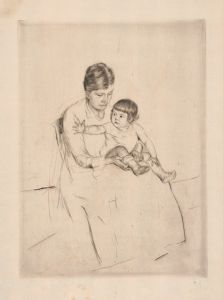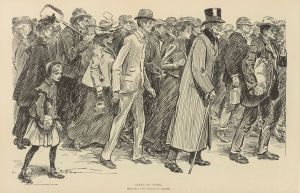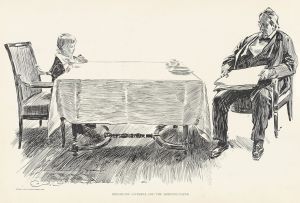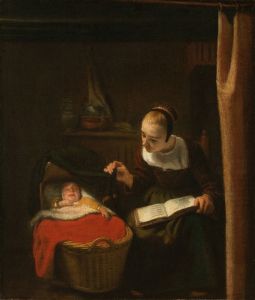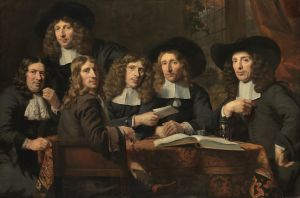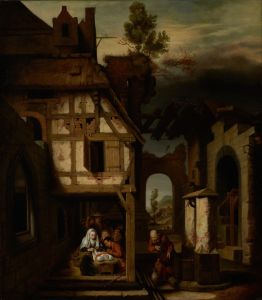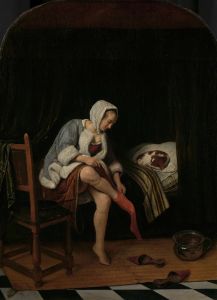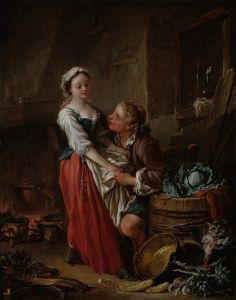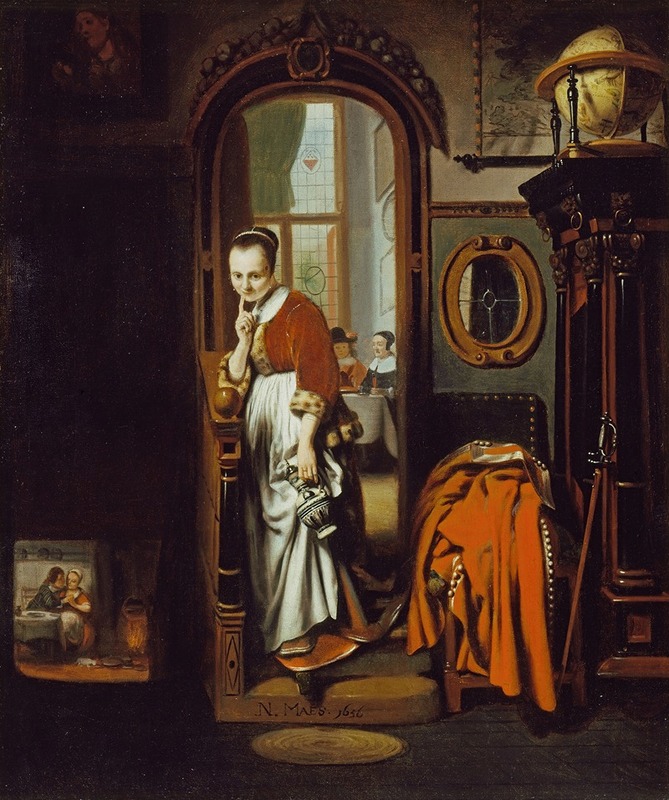
The Listening Housewife
A hand-painted replica of Nicolaes Maes’s masterpiece The Listening Housewife, meticulously crafted by professional artists to capture the true essence of the original. Each piece is created with museum-quality canvas and rare mineral pigments, carefully painted by experienced artists with delicate brushstrokes and rich, layered colors to perfectly recreate the texture of the original artwork. Unlike machine-printed reproductions, this hand-painted version brings the painting to life, infused with the artist’s emotions and skill in every stroke. Whether for personal collection or home decoration, it instantly elevates the artistic atmosphere of any space.
"The Listening Housewife" is a painting by the Dutch artist Nicolaes Maes, created around 1655. Maes was a pupil of Rembrandt and is known for his genre paintings and portraits. This particular work is an excellent example of his genre scenes, which often depict domestic life with a keen sense of observation and a touch of humor.
The painting portrays a woman, presumably a housewife, who is engaged in the act of eavesdropping. She is shown standing at the top of a staircase, leaning slightly forward with her hand cupped around her ear, indicating that she is listening intently to something happening out of the viewer's sight. The setting is a typical Dutch interior of the 17th century, characterized by its detailed and realistic depiction of everyday life.
Maes's use of light and shadow in "The Listening Housewife" is particularly noteworthy. The light source appears to come from a window or an open door, illuminating the housewife's face and upper body while casting the lower part of the staircase into shadow. This technique not only highlights the central figure but also adds a sense of depth and realism to the scene.
The painting is also significant for its narrative quality. The act of eavesdropping suggests a story beyond the frame, inviting viewers to speculate about what the housewife might be overhearing. This element of storytelling is a hallmark of Maes's genre paintings, which often capture moments of everyday life imbued with a sense of curiosity and intrigue.
Nicolaes Maes's attention to detail is evident in the meticulous rendering of the housewife's attire and the surrounding interior. The woman's clothing, consisting of a simple yet elegant dress and a white headscarf, reflects the fashion of the time. The interior, with its wooden staircase and plastered walls, provides a glimpse into the domestic architecture of the Dutch Golden Age.
"The Listening Housewife" is housed in the Mauritshuis museum in The Hague, Netherlands. The Mauritshuis is renowned for its collection of Dutch Golden Age paintings, and Maes's work is a valuable part of this collection. The painting is appreciated not only for its artistic qualities but also for its insight into the social and cultural context of 17th-century Dutch life.
In summary, "The Listening Housewife" by Nicolaes Maes is a masterful genre painting that captures a moment of domestic life with realism and narrative depth. Maes's skillful use of light and shadow, attention to detail, and ability to convey a story through a single scene make this work a notable example of Dutch Golden Age painting.





